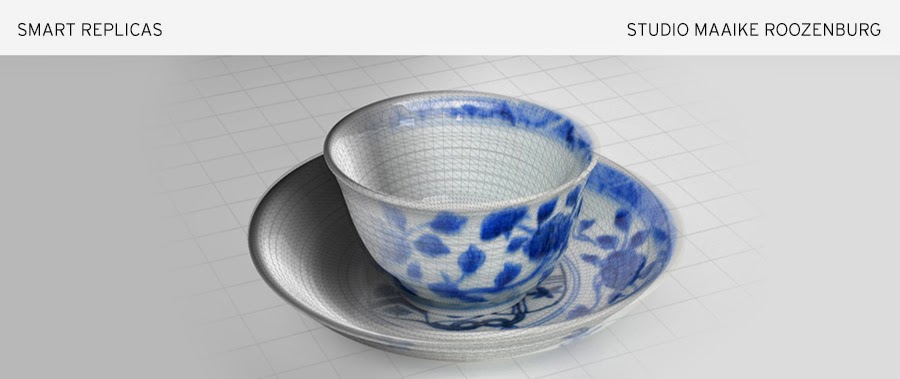Jingdezhen is famous for it's super thin refined porcelain. This is why it was so much wanted and desired all around the world. Why the emperial kilns where in Jingdezhen for the exclusive production for the bowls, dishes and objects for the emperor in the forbidden city. I alway asumed that this insane thinness was achieved by throwing. But its not. its all in the trimming! Trimming is the process after the throwing, when the pots are placed on a spinning wheel and trimmed with special tools till they are so thin that the are almost translucent and as smouth as a shell...This same process is now being used to make my true replicas.
dinsdag 4 oktober 2016
maandag 3 oktober 2016
True replicas: Throwing replicas
In Jingdezhen the porcelain clay is shaped
by throwing on a wheel. That’s how they did it ages ago and how they still do
it, nothing changed. The well kneaded clay is thrown hard onto the centre of
the bat. Like a ballet the craftsman in now forming the clay into a bowl. Ones
the wheel was made spinning by turning a long stick, now electric wheels are
used. This craftsman I visited made me one Ming bowl in one cigarette,
including the calculations compensating for the shrinkage of the clay after
firering. Looking at the pictures of the original and with thousands of similar
bowls in 'the memory of his hands' he shaped my replicas in know time. History and heritage are so alive here it sometimes almost make me cry...and here they don't care, its just what they do...
zaterdag 1 oktober 2016
woensdag 28 september 2016
True replicas: Ye, the model- and mould maker
vrijdag 16 september 2016
True replicas: function and materiality
We reconstruct the past from 'sources': objects,
remains and texts. They are discovered, excavated, collected and preserved, serving as sources to
reconstruct and study our history. As a society, we derive our identity, our
‘sense of belonging’ from this heritage - these objects. But as soon as these
objects became historical source and put in museums and storage, they left some
of their soul behind. These utensils
lost their function, their nearness and role in human lives, their materiality.
With True replicas I want to give these objects their
soul back: their function and the experience of their materiality. Therefore I
use the replica, aiming to stretch the boundaries of traditional notions of the
replica as an autonomous object based on a historical source. The replica as a
means to give back a historical 'untouchable' object its function and material
experience.
The goal of the project is not to make the most
literal copy of the original. I want to use 3D prototyping technology combined
with the traditional techniques used in the original to make these replicas.
Merging material and immaterial heritage. Here in Jingdezhen I will explore how
I can replicate a series of 17th century Chinese porcelain by using 3D scanning
an printing techniques and by applying the ongoing tradition of porcelain
production that still is (almost) unchanged since the production of the
originals. The whole process of making these replicas will play a essential
role in these new objects. Looking for true replicas in its most literal sense.
zondag 11 september 2016
True Replicas: the objects
Together with Archeologist Steven Jongma of Delft Heritage, I sellected 5 objects excavated in Delft. They all date back to the 17th century, are made of porcelain and are manifactured in China, probably Jingdezhen. This kind of porcelain was made specially for the export marked, following the 'western taste'. Some are broken and restored, some are broken and just put together.
 |
| 'Klapmuts': A-2-21, excavated in 1972 |
 |
| 'Klapmuts': A-2-21, excavated in 1972 |
 |
| cup, DL 88 V15 |
 |
| cup, DL 88 V15 |
 |
| 'Klapmuts' OLD 74-1-1, excavated in 1974 |
 |
| 'Klapmuts' OLD 74-1-1, excavated in 1974 |
 |
| Bowl, V4/7, excavated in 1986 |
 |
| Bowl, V4/7, excavated in 1986 |
 |
| Bowl, V4/7, excavated in 1986 |
 |
| Cup with relief, OKL 3 |
 |
| Cup with relief, OKL 3 |
Labels:
3D prints,
archeologen,
Archeology,
ceramics,
China,
cultural heritage,
cultureel erfgoed,
Delft,
Erfgoed Delft,
International Studio Jingdezhen,
museumstuk,
Smart Replica's
woensdag 7 september 2016
True Replicas: to Delft and back
In the city
of Delft porcelain cups, bowls and dishes are excavated that in the 17th
century where imported from China and produced in Jingdezhen. Objects that
where highly valued and loved for their elegant shapes, blue and white
decoration and above all for their magical material: porcelain. Objects that
where used in daily lives to display, to drink and eat from.
With the Archaeologists of Delft Maaike Roozenburg has selected a series
of these excavated porcelain artefacts. In cooperation with the Delft Technical
University she has made 3D scans of these objects and converted them into 3D
models and prints. Roozenburg brought them back to their city of origin and will
combine them with the expertise in making and decorating porcelain still alive
in Jingdezhen and let this serve as a basis for a new collection of porcelain. A new design collection on the intersection of history and design of east and west combining tangable and intangable heritage.
 |
| archeological objects: 17th century chinese porcelain excavated in Delft soil |
 |
| 3D print in nylon by Mareco Prototyping |
 |
| archeological object: 17th century chinese porcelain excavated in Delft soil |
 |
| Atec 3D scan |
Abonneren op:
Posts (Atom)
















